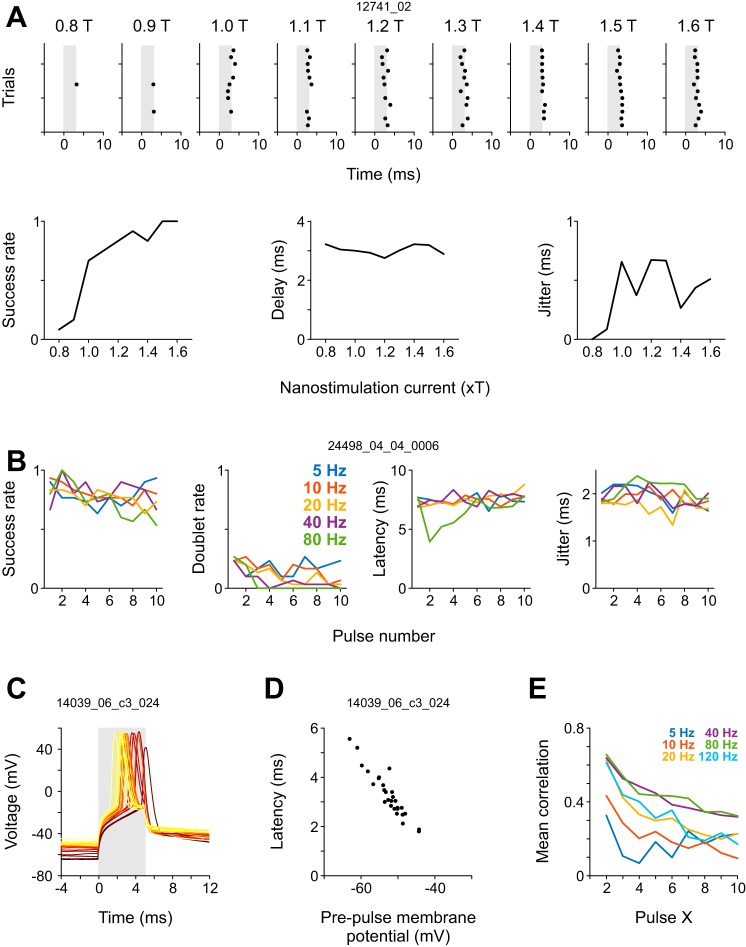Fig. 6.
Reliability and temporal precision of single action potential induction using 3-ms and 10-ms rectangular current pulses in whole cell recordings. A: whole cell experiment on a neuron stimulated with 3-ms rectangular pulses delivered at 0.4 Hz. Stimulation current was varied between 0.8 and 1.6 T to assess the current amplitude dependence of spike induction. Top: spike raster. Shading indicates stimulus duration. Bottom: success rate, spike onset latency, and spike time jitter as a function of current amplitude. Analysis windows were extended to 5 ms to capture spikes immediately following stimulus offset. B: whole cell experiment on a neuron stimulated with 10-ms rectangular pulses (1.3 T) arranged in trains of varying frequency (5–80 Hz, constant interpulse intervals, repetition rate 0.2 Hz). Same neuron as in Fig. 5C. Panels show success and doublet rates, spike onset latency, and spike time jitter as a function of pulse number in the train and stimulation frequency (color-coded). Analysis windows were set to 15 ms (results were virtually unaffected by reducing the width to 10 ms). C–E: spike onset latency depends on prepulse membrane potential. C: membrane potential responses to 20 rectangular current injections (5 ms duration, 1.3 T, repetition rate 0.2 Hz) for a cell recorded in whole cell configuration. Data were taken from the experiment in Fig. 5D; only the first pulse in each pulse train was included for analysis. Color code of traces indicates prepulse membrane potential. D: scatterplot illustrating the negative relationship between the membrane potential averaged over a 10-ms period before pulse onset and spike onset latency (same cell as in Fig. 5A). E: in kurzpuls nanostimulation experiments with trains of 10 pulses, spike onset times for pulses 2–9 were positively correlated with spike onset time for pulse 1. Plot displays the Pearson correlation between pulse 1 spike onset time and pulse X spike onset time, averaged over n = 23 cells (same data as in Fig. 3). Colors represent stimulation frequencies (5–120 Hz).

